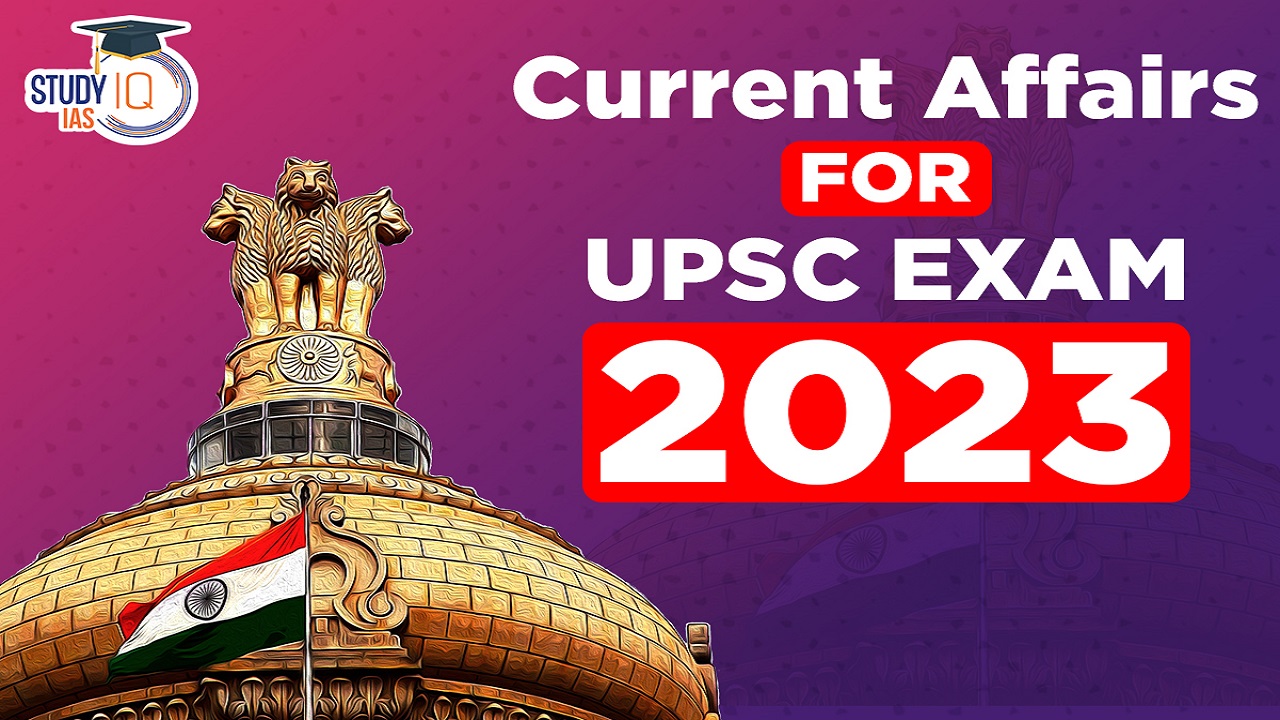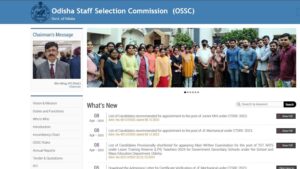Current Affairs 14th August 2023 for UPSC Prelims Exam
The Rule of law vs Rule by law
Context: The Nuh and Gurugram districts of Haryana have witnessed the demolition of people’s dwelling who are accused in criminal cases especially offences having communal sensitivity without following the procedure as established by law.
More on News
- The Punjab and Haryana High Court made a rare interference by taking judicial notice suo motu and stayed the demolition drive.
- The High Court’s question whether an exercise of ethnic cleansing is being carried out by the State brings us to the heart of the issue.
- The administrative act of demolishing dwellings and buildings without issuing notice and hearing the affected, to further selective social control necessarily warrants judicial interference.
- Any justification to the contrary amounts to the delegitimization of the constitutional process.
- Law is a tool of social control that is backed by the sovereign. But such a definition of law makes it a double-edged sword. It can be used not only to render justice, but it can also be used to justify oppression.
The Rule of law
- Definition: It means that all laws apply equally to all citizens of the country, and no one can be above the law.
- Any crime or violation of law has a specific punishment as well as a process through which the guilt of the person has to be established.
- It also says that no person shall be subject to harsh, uncivilized or discriminatory treatment even for the sake of maintaining law and order.
- In India, the reflection of rule of law can be seen in Article 21 of Indian constitution and had its contours expanded by the Supreme Court.
- Origin: It was A.V. Dicey, the English Professor and Constitutional expert, who developed this concept. He defined 3 principles that govern the rule of law:
- Supremacy of Law
- No man shall be punished or made to suffer in body or goods except for the violation of the law. Such a violation must be established in an ordinary court of the land and in an ordinary legal manner.
- Equality before Law
- No man is above the law and everyone, whatever his condition or rank is, is subject to the ordinary laws of the land. <It means a person can sue or be sued in a court of law>
- Predominance of Legal Spirit
- The result of the ordinary law of the land is Constitution. It indicates that the general principles of the constitution are the result of judicial decisions of the courts in England. However, this principle does not apply in the case of a written constitution. It stands modified in India, where it reads that the constitution is the supreme law of the land & all other laws in order to be legally valid shall conform to the constitution.
- Supremacy of Law
The Rule by law
- Rule by law is when the law is used as an instrument of suppression, oppression and social control in the course of implementing a political agenda.
- For example, the British used the law as a tool of political repression, enforcing it unequally on the parties, with a different set of rules for the British and for the Indians.
- It was famous for “Rule by Law”, rather than “Rule of Law”, as it aimed at controlling the Indian subjects.
Pradhan Mantri Uchchatar Shiksha Abhiyan (PM-USHA)
Context: PM-USHA scheme has 60:40 funding split between Centre and States, with no extra money for National Education Policy reforms.
About Pradhan Mantri Uchchatar Shiksha Abhiyan (PM-USHA)
- Definition: Under the National Education Policy, Rashtriya Uchchatar Shiksha Abhiyan (RUSA) has been launched as Pradhan Mantri Uchchatar Shiksha Abhiyan (PM-USHA).
- Pradhan Mantri Uchchatar Shiksha Abhiyan (PM-USHA) a centrally sponsored programme, aims to work with 300-plus state universities and its affiliated colleges.
- Aim: The PM-USHA aims at providing strategic funding to eligible state higher educational institutions.
- Funding:
- A. PM-USHA is funded through the Ministry of Education (MoE) with prescribed contributions from the State governments and Union Territories (UTs).
- The project cost in the public-funded institutions is shared between the Central Government and State Governments in the ratio of 90:10 for NorthEaster,n States, J&K, Himachal Pradesh, and Uttarakhand and 60:40 for the Other States and UTs with Legislature, the UTs without Legislature would be 100% centrally funded under this scheme
- Objectives:
- Equity Access and inclusion in higher education
- Developing Quality Teaching & Learning processes
- Accreditation of Non-Accredited Institutions and improving accreditation
- ICT – based Digital Infrastructure. e) Enhancing Employability through Multidisciplinary.
Manual for Drought Management, 2016
Context: Karnataka Chief Minister has written to the Union government to bring changes to the Manual for Drought Management, 2016 (updated in 2020) for the declaration of drought by the States.
About Manual for Drought Management, 2016
- Drought is a temporary aberration, unlike aridity or even seasonal aridity (in terms of a well-defined dry season), which is a permanent feature of climate.
- Definition: The 2016 version of the Drought Management Manual is a guide for governments and agencies in India engaged in the prevention, mitigation and management of drought.
- This guide, updated from the 2009 version, seeks to gain from the knowledge and experiences of the past seven years.
- Measures: The manual sets out four important measures that a state government should take at the time of a drought, with the Union government’s help.
- It should use the Mahatma Gandhi National Rural Employment Guarantee Scheme (MGNREGS) to provide immediate employment to drought-affected people.
- The public distribution mechanism should be strengthened to provide food and fodder as a measure to sustain the rural economy.
- The government should initiate actions to recharge the groundwater table by building check dams and providing pipeline water and other irrigation facilities.
- The government should either waive off or defer farmer loans and arrange for crop loss compensation.
- Problem Areas in the Manual:
- The Manual for Drought Management of the Centre “integrates meteorological, agricultural and hydrological drought”, which did not capture the agricultural distress in rural areas.
- Though rainfall deficit can recover due to strong monsoon pressure systems in the last few weeks of monsoons, scanty rainfall during the first half of the sowing season starting in June has an impact on agriculture and triggers agriculture drought.
- The early declaration of drought is made difficult due to conditions imposed in the manual which mandates that “sowing has to be completed and a declaration has to be given by the State Governments that no further sowing is expected,”. Adding this has prevented the state government from undertaking immediate relief and mitigation measures.
- The manual rigidly defines dry spells assuming its impact on agriculture would be similar everywhere and in all time scales.
- Factors like type of soil, type of crop, temperatures and vegetative state equally matter due to which even a dry spell of two weeks can lead to irreversible crop damage.
- Hence, the Centre needs to redefine dry spells from the existing three to four-week period to lower than two weeks of consecutive dry spells.
- The existing “one-size-fits-all approach” for drought declaration does not capture the problems faced in 14 agro-climatic regions of the state.
- The Centre needs to develop region-specific criteria that considered local ecological factors, water availability and agricultural practices to declare drought.
- The Manual for Drought Management of the Centre “integrates meteorological, agricultural and hydrological drought”, which did not capture the agricultural distress in rural areas.
Inclusive Conservation Initiative (ICI)
Context: The Inclusive Conservation Initiative (ICI) released its Phase One Report, summarizing the first phase of its implementation.
About the Inclusive Conservation Initiative (ICI)
- It is an initiative endorsed by the Global Environment Facility (GEF).
- Objective: To enhance Indigenous Peoples’ and Local Communities’ (IPs and LCs) efforts to steward land, waters and natural resources to deliver global environmental benefits.
- ICI works inclusively with IPs and LCs, their regional and local organizations, governments, NGOs, civil society and others to further strengthen their capacity to conserve globally significant biodiversity and ecosystems.
About the Global Environment Facility (GEF)
- GEF is a multilateral environmental fund that provides grants and blended finance for projects related to biodiversity, climate change, pollution etc., in developing countries.
- It is the largest source of multilateral funding for biodiversity globally, and distributes more than $1 billion a year on average to address inter-related environmental challenges.
- The GEF was established ahead of the 1992 Rio Earth Summit and includes 184 countries (including India) in partnership with international institutions, civil society organizations, and the private sector.
- Its secretariat is based in Washington, D.C.
- The World Bank serves as the GEF Trustee, administering the GEF Trust Fund (contributions by donors).


 Daily Quiz 18 April 2025
Daily Quiz 18 April 2025
 OSSC CGL Syllabus 2025 and Exam Pattern ...
OSSC CGL Syllabus 2025 and Exam Pattern ...
 AI and its Regulation in India, Limitati...
AI and its Regulation in India, Limitati...





















